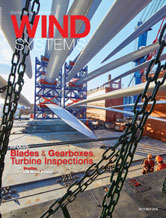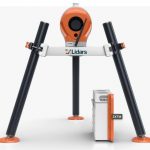UK Electronic Solutions (part of NSSLGlobal Group), has created a new self-contained motion and impact monitoring system suited to offshore vessels.
The system, Oceanic Dynamics, protects the longevity of offshore assets by monitoring and reporting vessel impact on structures, passenger comfort, and safety and engine performance and reliability.
Offshore structures have highly stringent requirements when it comes to the total impact force allowed from docking vessels. Vessels are generally obliged to remain within pre-specified ranges of impact force and to operate only within certain environmental conditions, or else run the risk of voiding their service-level agreements. It is advantageous for companies operating vessels to closely monitor impacts that occur while docking and offloading in order to justify their performance. Oceanic Dynamics uses a microelectromechanical-system-based orientation sensor to monitor motion and impact of the vessel as it docks, enabling vessel operators to keep in line with regulations.
While impact monitoring was the starting point and primary function of the system, Oceanic Dynamics also is able to monitor fuel efficiency, engine data, and route information, as well as the vessel’s dynamic stability within the water. These extra functions offer transfer vessel operators the potential to justify the cost efficiencies and eco credentials of their service. Oceanic Dynamics also employs an HD CCTV bullet camera to record footage from the deck of the vessel at all times. The video footage helps clarify events on board and provides further visibility when the vessel docks.
“We are currently (testing) Oceanic Dynamics and have installed the system on our newest crew transfer vessel, Dalby Ouse,” said Steve Bartram, operations manager of Dalby Offshore. “So far, we are extremely impressed with the results and have already seen real value in our investment, particularly as it helps us comply with the impact force and contractual regulations required by the client. The fact that the product is available on a contractual basis is also cost-effective and convenient.”
“Offshore structures are reasonably sensitive to impact, and there are limits to the amount of force vessels can exert on them while docking or working alongside them,” said Paul Rutherford, managing director of UK Electronic Solutions. “Oceanic Dynamics is the first system of this type to address the complete requirement of operators and construction companies. Although Oceanic Dynamics was primarily developed to assist crew transfer vessels, it can also be installed on tugs, pilot vessels, and lifeboats where it similarly monitors performance and provides an audit trail for incidents, maintenance, and performance.”
Oceanic Dynamics delivers a weekly comprehensive report of how the vessel, crew, and environment are affecting vessel performance. This report can be tailored in-line with the specific content, complexity, and frequency required by the vessel operator. All information is stored locally within the unit until the vessel is within GSM or Wi-Fi range and can then be downloaded to shore. Should there be a requirement for data to be transferred to shore more immediately, the unit also is capable of integrating with any onboard satcom system.
The Oceanic Dynamics box is also highly compact and is contained inside a single briefcase. This is designed to create minimal physical impact and to ensure the system can be moved easily between vessels.
Source: UK Electronic Solutions
For more information, go to www.oceanicdynamics.co








































